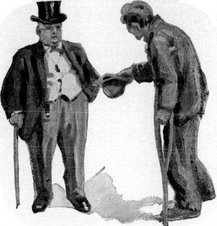The lesson is: Don't ASSume. Don't assume that DRM will be around forever. Don't assume that the computer and telecommunications industries won't throw off the yoke of DRM to achieve more growth. With one modest epistle – not the “tear down this wall” flourish you might expect from Steve Jobs – the future of DRM was thrown into question. Subsequently, EMI tore a hole in the RIAA members' hitherto seamless adherence to DRM, and Apple removed the barriers to using EMI music bought from iTunes on other music players.
Content protection of consumer media products has been around in one form or another since Hollywood got all itchy about consumer videotape machines and started fooling with the signal to prevent tapes from being copied. Macrovision, the most successful developer of tape content protection was founded in 1983, and is still around, protecting digital content from the people who buy it. Other early forms of content protection include market research reports printed on blue paper, with watermarks and serial numbers, to thwart photocopying.
DRM, the digital form of copy-protection, has been a topic of serious research for about the past 20 years. Video games, commercial computer software, data compilations, typefaces, clip art, etc. use, or have used, various forms of content protection to try to slow down use of commercial digitally stored products in ways that contravene the license agreements that sellers of these products use to create an environment in which – in general terms – content belongs to the provider and is rented to customers. DRM is the prevalent form of content protection today because copying digitally stored content is fast and cheap, and this has raised the stakes: Any “leak” of a digitally stored product can be quickly turned into thousands or millions of copies.
The moral and legal basis for contracts licensing the use of intellectual property long predates recorded performances as a consumer product. In the U.S., copyright and patents were created, in the words of the United States Constitution...
To promote the Progress of Science and useful Arts, by securing for limited Times to Authors and Inventors the exclusive Right to their respective Writings and Discoveries.
That's it. Anything outside that authorization, in U.S. federal law, is illegitimate in that it has no constitutional basis.
There are three distinctive aspects of intellectual property: 1. It is a right created by government. The right to intellectual property is not an inalienable right – it is not one that exists with or without government acknowledgment. 2. It has a stated purpose. No other human right has to justify itself. 3. It expires: You own your property forever, but your copyright or patent expires and your “ownership” or, more correctly, your exclusivity in use, licensing, or publishing, is over, in order to create a greater common holding of knowledge and art.
So how did we get from such a weak, limited, qualified, and overall second tier right as that created by this cautiously crafted clause to today's ponderous, invasive, unbounded, intrusive, over-lawyered, kudzu-like thicket of laws and technologies? Consider, for example, showing the “FBI warning” on a DVD recording, that says you will become a felon by doing something untoward with a DVD of Howard the Duck, to one of the people who drafted the Constitution's intellectual property clause. Ask them “Is this what you meant?” Never mind the DMCA and other sausages of dubious legal content.
The 100 year history of recorded performances has funded a tsunami of lawyers and lobbyists that have succeeded in overwhelming all restraints on turning our intellectual property laws into a travesty of original intent. Starting on the basis of such raucous cognitive dissonance, no wonder the modern pursuit of intellectual property has overshot even the most elastic bounds, and is now starting to snap back.
Steve Jobs's objection is, like any reasonable view of intellectual property, both pro-freedom and pro-commerce. DRM has failed the business of selling music recordings. Two or three out of a thousand songs on iPods are sold from Apple's relatively successful Internet music shop. The rest of the DRM-protected music download business is a miserable failure, just like DRM-protected e-books were a readily predictable irretrievable flop, and for much the same reason: Even the most apathetic consumer sees the value of the ability to transfer, backup, and migrate their music collection. DRM thwarts these basic requirements. The value of buying and selling in a secondary market is also completely extinguished by DRM.
The response of the recorded music industry was to try to eradicate any choice other than DRM'ed music. As if making a content gulag that was so big you could not see the barbed wire perimeter would make it seem like your content was not imprisoned.
Content protection does not always fail. When is the last time you heard someone complain that their Nintendo DS uses content protection? You don't hear such complaints because all the software runs on all and only that hardware. You can buy a DS cartridge, transfer it to another DS, sell it, and buy a different used cartridge exactly as if you were buying and selling books. The product is tangible and your use of it is in practical terms irrevocable. You don't use a DS for private documents. You can chat on it, but it isn't a general-purpose communications device, so there are no privacy concerns. DRM, when it is un-intrusive, and non-essential to any truly important personal matter, does not stand in the way of product success.
People who make DRM systems have no excuse: The examples that work are out there. Failure to realize that anything outside such closed ecosystems is damaged by DRM to the point where customers reject it as defective is entirely the fault of the system designers.
How far will this backlash lash? There is another change in Apple's position on DRM that is also noteworthy: In October 2006, Apple stopped using a Trusted Platform Module (TPM) on its motherboards. Trusted Computing is a delightfully newspeak term. It means you, the computer owner, cannot be trusted, and that certain data and code has to be hidden from you on your own computer. Trusted computing is, of course, antithetical to Personal Computing. If you don't control every bit inside your computer it isn't personal. In fact, it is partially owned and controlled by someone else.
The full exposition on Trusted Computing is a topic for another post. But the summary of the problem is that computers are an all or nothing affair: Once you let that tiny bit of camel's nose under the tent, you will have a tent full of camels in short order, each of them snooping on behalf of some interested party, be it the people who think you might be a terrorist, or the people who think you have evil intent for their music recordings. One could even implement some form of “Information Purification Directives.”
If Apple smells an opportunity in reasserting the Personal part of Personal Computing, especially as Microsoft appears to be turning your PC into a servant of the content publishers, we may see a very interesting phase of the PC business emerge.
Saturday, April 14, 2007
You Can't Spell DRM without "A-S-S"
Posted by
Zigurd
at
2:38 PM
2
comments
![]()
Subscribe to:
Posts (Atom)




